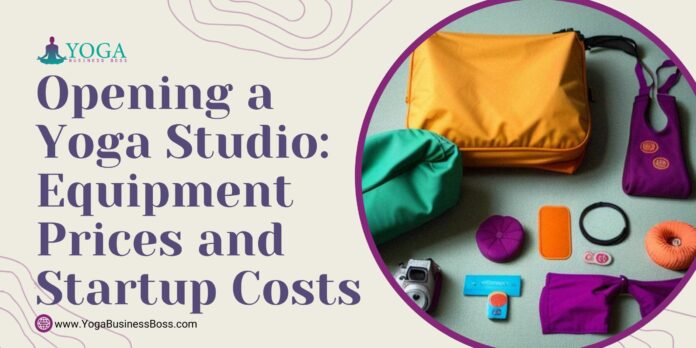Opening a yoga studio is an exciting adventure. Picture a serene space with soft light, the scent of sandalwood in the air, and neatly stacked yoga mats ready for eager-to-learn practitioners.
But what are all the big—and small—pieces that make up a great yoga studio?
Sure, there are the must-haves, like yoga mats. But providing props beyond the necessary, like blocks, blankets, and bolsters makes your studio more inclusive and valuable.
And then there are the little things. Straps and blankets. Incense and a little speaker. Perhaps a linen curtain to hide the props. Maybe a mandala hanging on the wall. Or a tree print. Or a bunch of plants in the corners! And some tea brewing in the entrance corridor….
These are just some ways you can offer students more than everything they need. It’s a way to turn your studio into a sanctuary they’ll crave returning to.
So—let’s take a deeper look at the must-have and nice-to-have equipment that will help you create an inviting atmosphere that students will love.
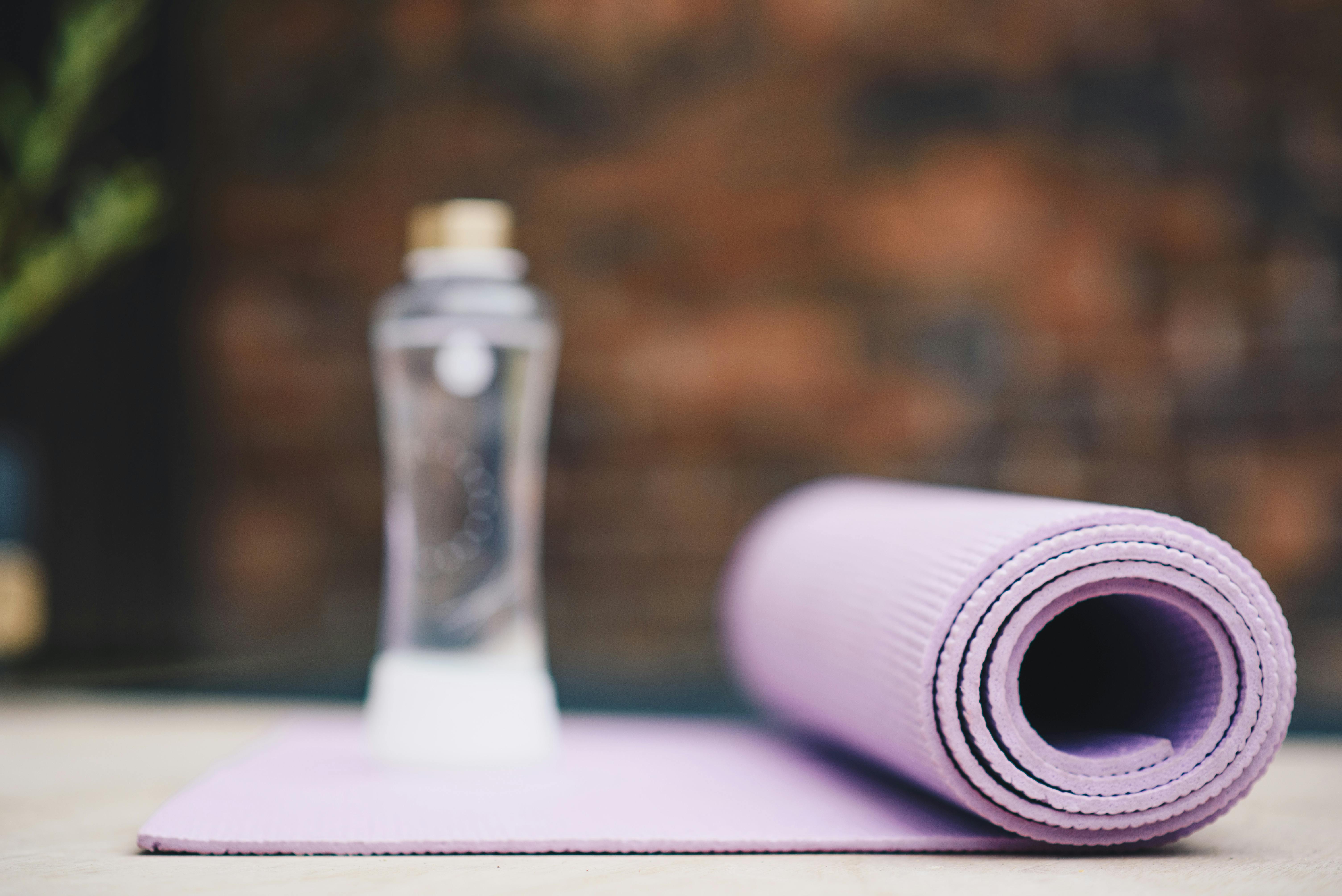
Must-Have Equipment for a Yoga Studio
Mats
Many new practitioners who want to try yoga may not have a personal mat to bring to your studio. And many experienced yogis don’t love lugging a mat around all day, just for that one hour in your studio.
Therefore, sourcing studio yoga mats is where you start. They’re the foundation that can single-handedly turn an empty room into a yoga space.
Not only do mats provide a safe, soft, and non-slip surface, but they also mark the personal space that each practitioner will have for themself during the class.
Blocks
Besides mats, yoga blocks are probably the second-most recognizable piece of equipment for yoga studios—and for a good reason. They make poses more achievable for beginners and allow yogis of all levels to experiment with getting in, out, and around asanas in different ways!
Bolsters
If you plan to add restorative yoga classes (or any slower and more relaxing styles, really) you need bolsters. They’ll provide firm yet comfortable support needed for longer holds in restorative and yin yoga.
They can also be used during savasana or other meditation-based sessions as a way to help yogis release tension and stress without adding pressure to sensitive areas.
Meditation Cushions
This prop is often included in studios that hold meditative sessions. Meditation cushions help us focus in those quiet, introspective moments. You’ll sometimes find them called a ‘zafu cushion’.
When meditating, you’ll want your practitioners to be extra comfortable in order to be able to better focus inward. A hard surface that puts too much pressure on some muscles or bones can be very distracting. This is why some meditation cushions even come with back support too. On the other hand, folded-up blankets and some blocks can work just as well, so see what suits your studio and realistically fits in your space.
Blankets
Another much-welcomed prop for meditative practices, especially in the winter or those chilly summer nights, is a soft blanket. This is especially important for the quiet, unwind time planned after a physically intense yoga session. Even on a relatively hot day, as the body cools down, lying down still can make people feel cold.
Plus, blankets are incredibly versatile. Aside from keeping yogis warm during savasana, blankets can also be used as a cushion under a sensitive knee, in place of a bolster when rolled up, or as extra padding during some asanas.
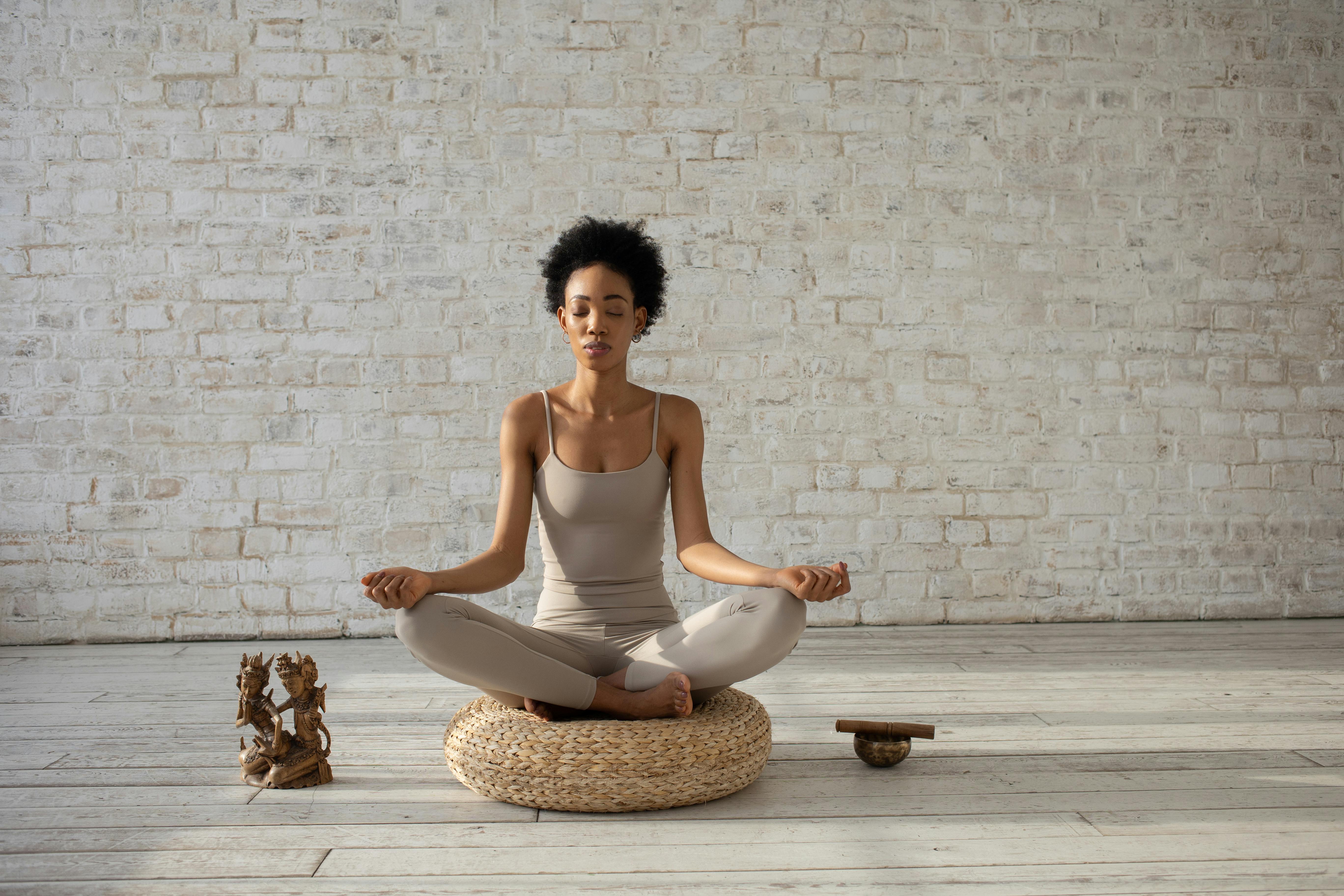
Chairs
Yoga chairs open up a world of possibilities for those who might find traditional yoga poses challenging. Imagine a class where everyone, regardless of mobility, can participate fully and safely.
You don’t need a chair for every practitioner – unless you offer chair yoga classes. Just keeping a couple of chairs in the corner can go a long way in making individuals with mobility issues or other conditions feel welcome and acknowledged.
Cleaning Supplies
A clean studio is a happy studio. Think about the peace of mind that comes with knowing the space is hygienic and well-maintained. Cleaning supplies are essential for keeping mats, blocks, and other equipment sanitary and safe.
This also shows students that you care about their health and well-being. I still remember my first experience in a yoga studio. At the end of the class, we all took a spray bottle and a small towel to clean the mat that we practiced on and put it on a drying rack, ready for the next group. It was such a simple request, yet incredibly profound. It made me trust that studio, knowing I could put my face on the mat next time without worrying about my health.
Cleaning supplies may include towels, mat cleaners, disinfectant wipes, and sprays, and we highly recommend sourcing eco-friendly products, not only for the environment but for your and your students’ health too!
Storage Units
Storage for Personal Belongings
Providing storage for your student’s personal belongings is a thoughtful touch that enhances the overall studio experience. Lockers or cubbies offer a secure place for practitioners to store their items, such as phones, wallets, bags, shoes, and coats during class.
And, they keep the practice area tidy, allowing yogis to immerse themselves in their practice without worrying about their personal belongings.
Bonus tip: When you offer lockers for practitioners’ belongings you have the grounds to prohibit phones and other electronics in the practice area.
Storage for Equipment
Aside from offering lockers for personal belongings, it is also nice to have storage space where regulars can leave some of their equipment (if that’s what they prefer).
However, it’s mostly for you to be able to organize all the equipment you’ll have, making sure everything has its place.
Additionally, proper storage solutions, such as shelves, racks, or bins help protect the equipment from wear and tear and keep it out of practitioners’ way, ensuring no one gets hurt by accident.
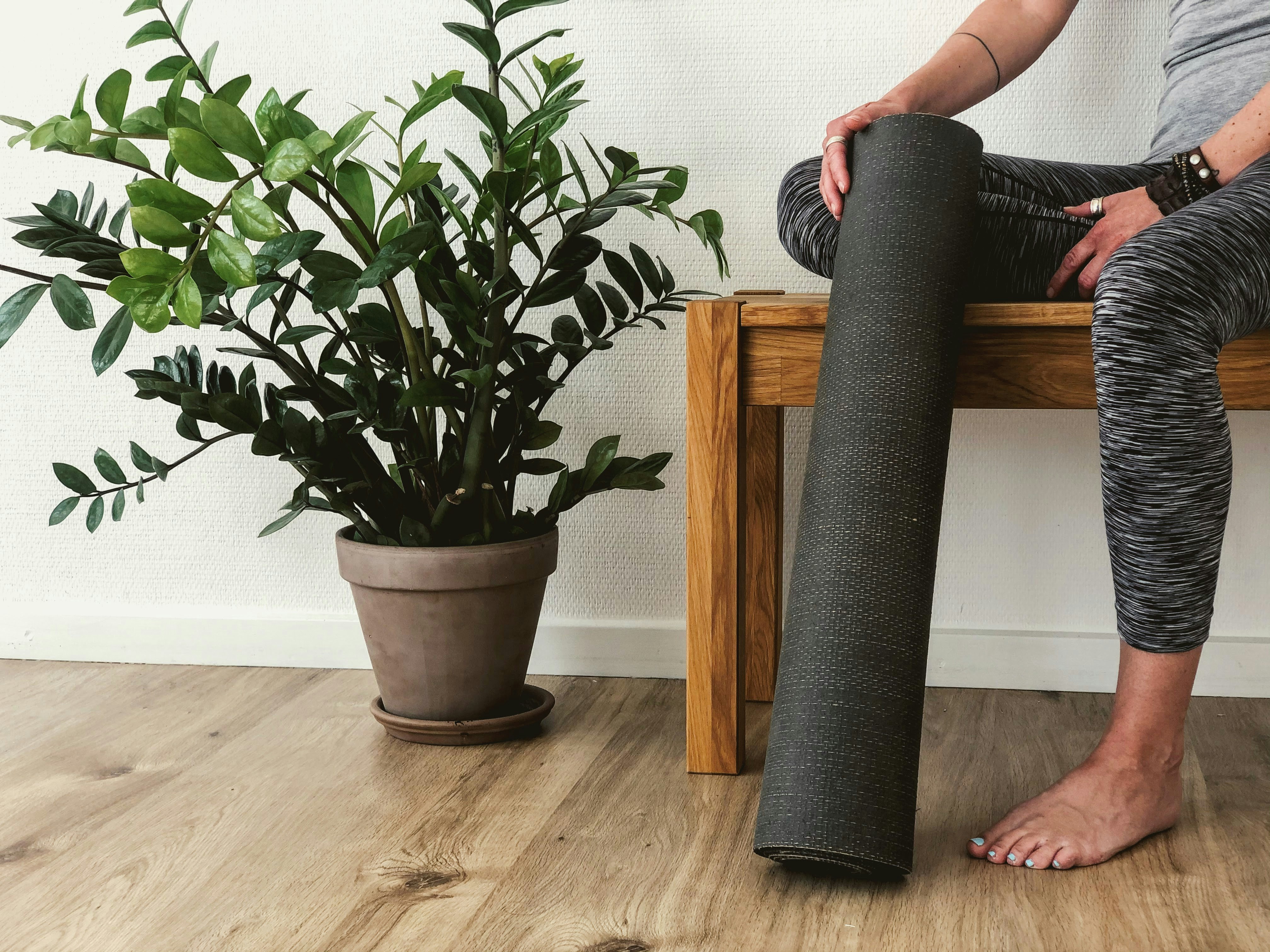
Changing Rooms
Changing rooms are an essential feature of any yoga studio.
The storage units that we’ve mentioned earlier can be part of the changing rooms where practitioners can store their personal belongings and change into comfy yoga clothes.
Keep in mind that having changing rooms is particularly important if you have a hot studio, or students sweat a lot in the classes you offer. In winter change rooms can allow yogis to change from their sweaty clothes before going home. If showers and a dryer are available, that would be two additional nice-to-have features, but certainly not a must. And of course, this depends on where in the world you’re located too!
Nice-to-Have Equipment for a Yoga Studio
Wheels
Yoga wheels are fantastic for adding an extra dimension to your practice. While not essential, they help deepen stretches, improve flexibility, and provide support in challenging poses.
Candles/Incense/Essential Oils
Creating a calming atmosphere can make a world of difference in a yoga studio. There’s hardly a better way to do that than by seasoning the air with a soothing scent.
Odors are extremely powerful mood setters and can provide cognitive facilitation and help yogis focus during their meditation practice.
Sandalwood and lavender are common choices, but it is always a good idea to inform newcomers about this practice, as some may have sensitivities that could make them uncomfortable.
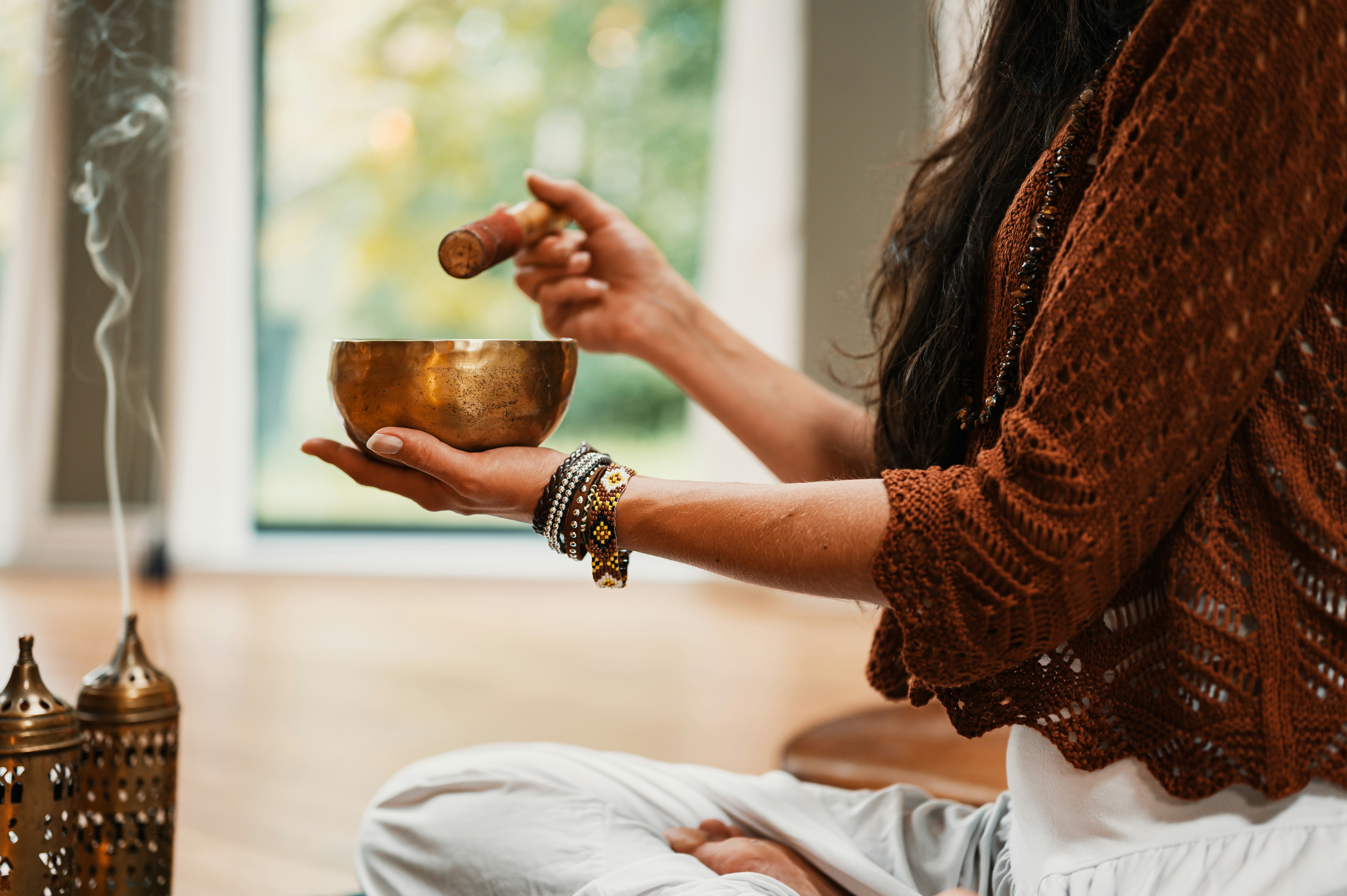
Ambient Lighting
Ambient lighting is one of the best ways to set the tone for a relaxing and calming yoga session. While it’s in the nice-to-have section, I’d say it’s almost a must!
Adjustable, soft lighting can make the studio feel welcoming and warm. It can enhance the overall mood and help practitioners feel more at ease.
Tip: Avoid very intense and bright lights as they can be very distracting and counter-productive for meditative practices.
Eye Pillows
Eye pillows are a small luxury that can make savasana and meditation even more relaxing. Filled with calming herbs, flaxseed, or a cooling gel, they gently press on the eyes, blocking out light and helping to reduce tension. Keep in mind you’ll need a way to clean them between use, or have tissues to prevent direct eye-to-pillow contact for shared props.
Sandbags
Similarly to eye pillows, sandbags are a very cool piece of equipment that will allow yogis to further enrich their practice and achieve more with less—more benefits with less demanding poses.
They work by adding gentle weight and support in restorative poses, helping deepen stretches, release tension, and make yogis feel grounded.
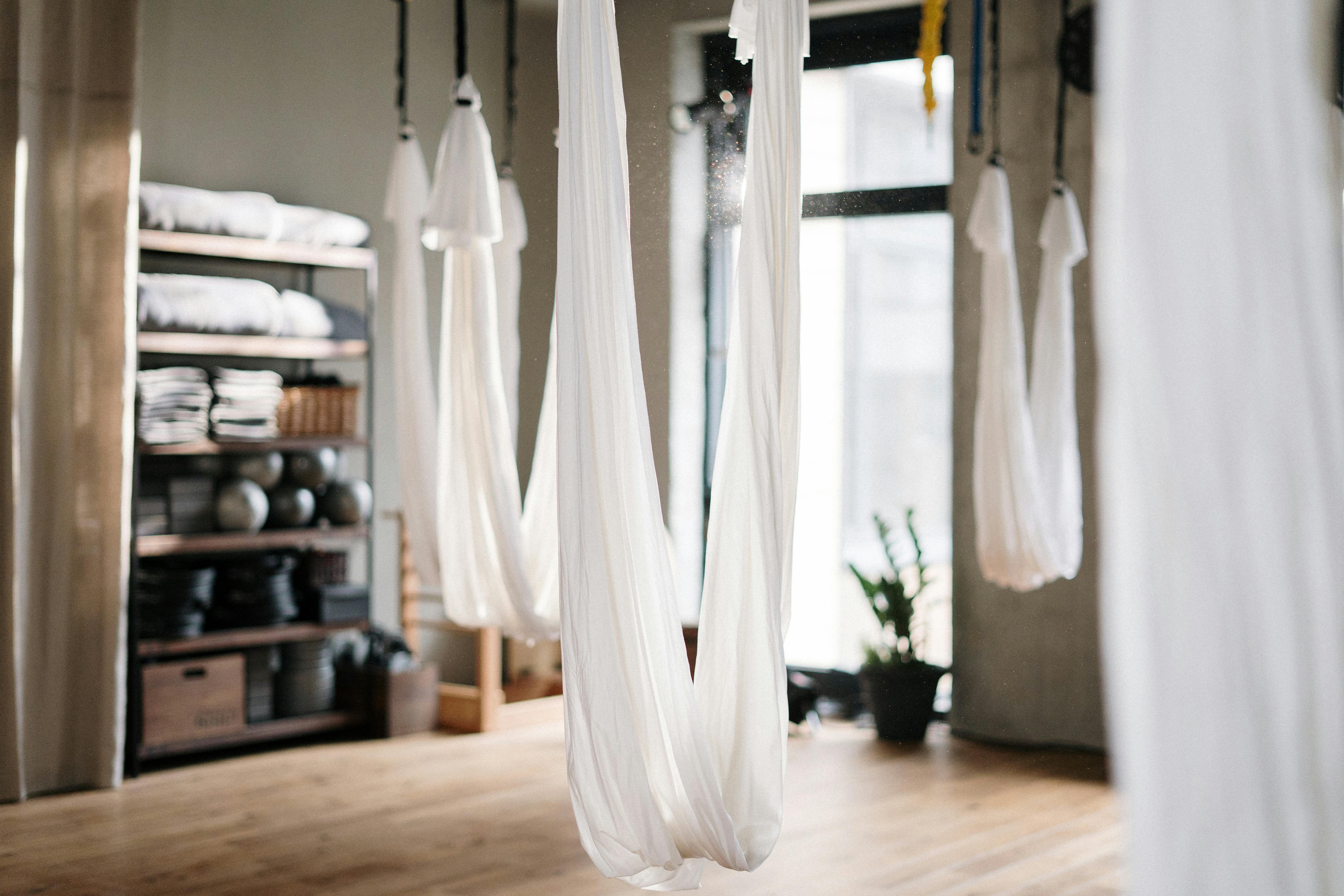
Yoga Swing (Optional)
For those looking to explore aerial yoga, a yoga swing can be a thrilling addition. It allows for dynamic movements, deep stretches, and inversions that are otherwise hard to achieve.
Having swings, or just the hooks to add swings to can also make your studio more versatile if you ever want to give that practice a try or collaborate with other aerial yoga teachers.
Wall Ropes (Optional)
Wall ropes are another way to make your studio offerings more unique, fun, and versatile. They help with alignment, allow for deeper stretches, and provide stability in inversions.
Iyengar yoga is a style in which wall ropes are commonly used. They’re known as yoga kurunta or korunta and most teachers use them as props to support people who are new to yoga and who find it difficult trying different poses.
Sound System
This one is in the nice-to-have section because it’s such a polarizing piece of equipment. Many teachers and practitioners perceive music or sounds during yoga sessions as a distraction. They crave silence to be able to focus. But, then on the other side, many teachers and practitioners equate yoga with relaxing background sounds or even upbeat tunes to get students in the flow.
So, it’s a personal choice, but one you should consider. It’s definitely helpful to have the equipment and then choose when and how to use it – soothing background music, pre-recorded guided meditation, or full-blown fast music to energize yogis in fast flows.
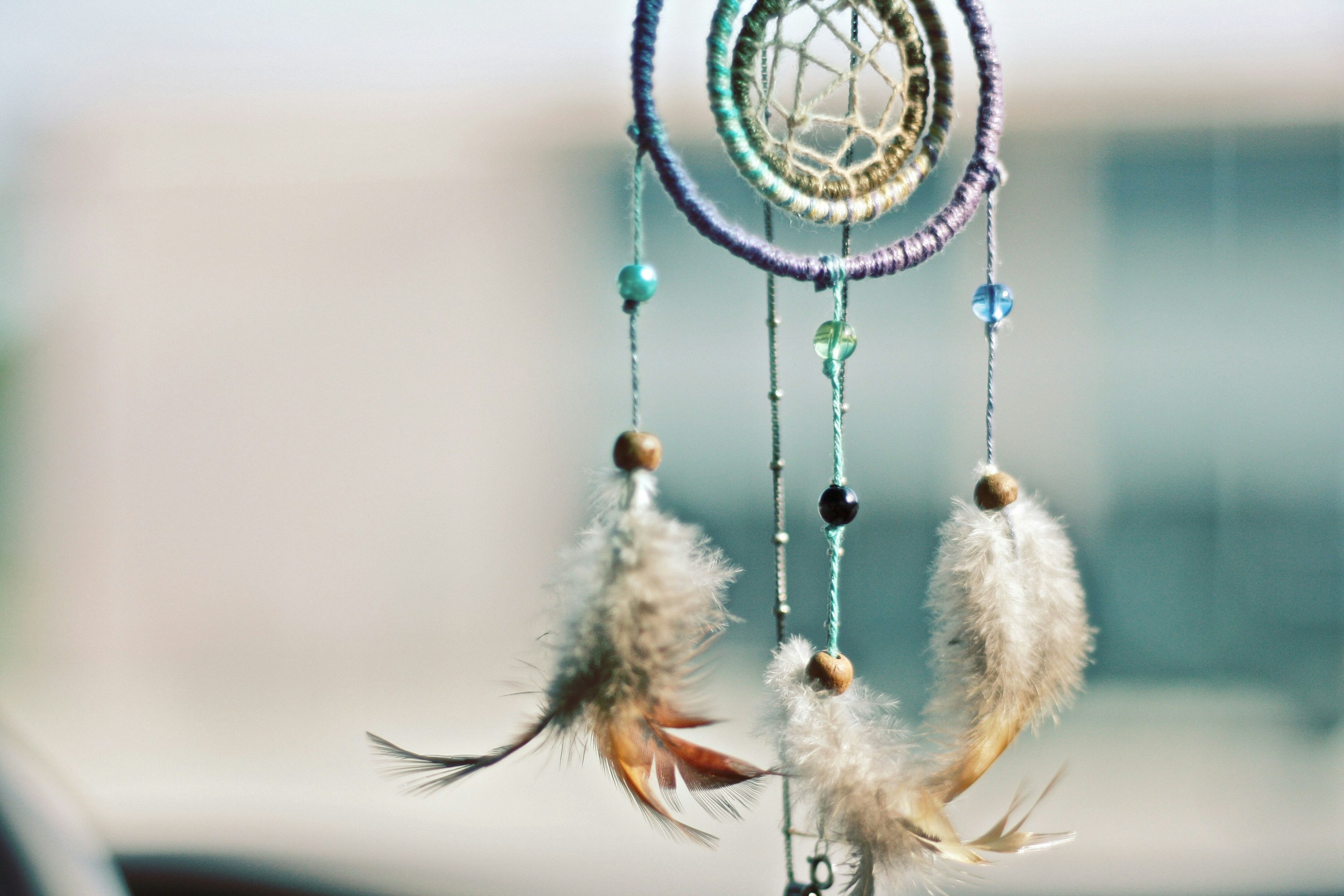
Decor
Thoughtful decor can transform a basic room into an inspiring yoga sanctuary—though the decor itself is very subjective and depends a lot on personal preferences. Think of your own personality, your studio’s “brand,” and the vibe you want to cultivate.
For instance, some yoga studios tend to use colorful pieces of equipment and draw yoga symbols on the walls, and then there are the minimalist, modern, and pastel-colored studios meant to promote a sense of calm and clarity.
Water Station
Last but not least, adding a water station where yogis can refresh and hydrate is a practical and much-appreciated addition to any yoga studio.
It’s a small but significant way to show that you prioritize your practitioners’ comfort, making your studio not just a place to practice yoga, but a place that cares about building a community.
Tip: Add a sliced lemon and/or cucumber inside a big bowl of filtered water to make everyone’s experience twice as good.
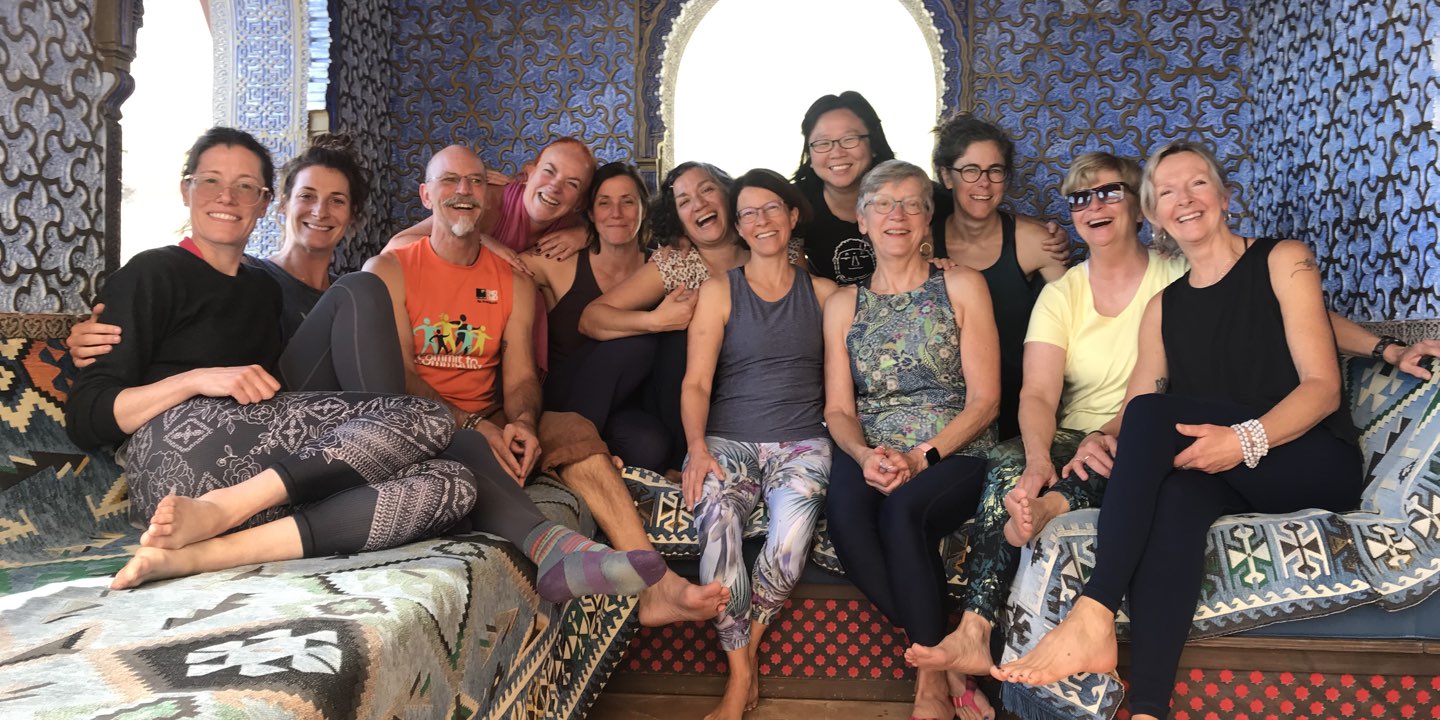
The Most Important Essential: A Big Smile to Welcome Newcomers
At the heart of every yoga studio is a warm, welcoming atmosphere. Not even all the mats, blocks, and meditation cushions in the world can replace the power of a genuine smile and a friendly greeting.
When a new student walks through your door, chances are they’ll be a little nervous or unsure. A welcoming smile and a friendly demeanor can immediately put them at ease.
Final note: Creating a space where everyone feels valued and seen is just as important as having the right equipment. Equip your studio with all the essentials, but never underestimate the magic of a heartfelt welcome. And, good luck!


